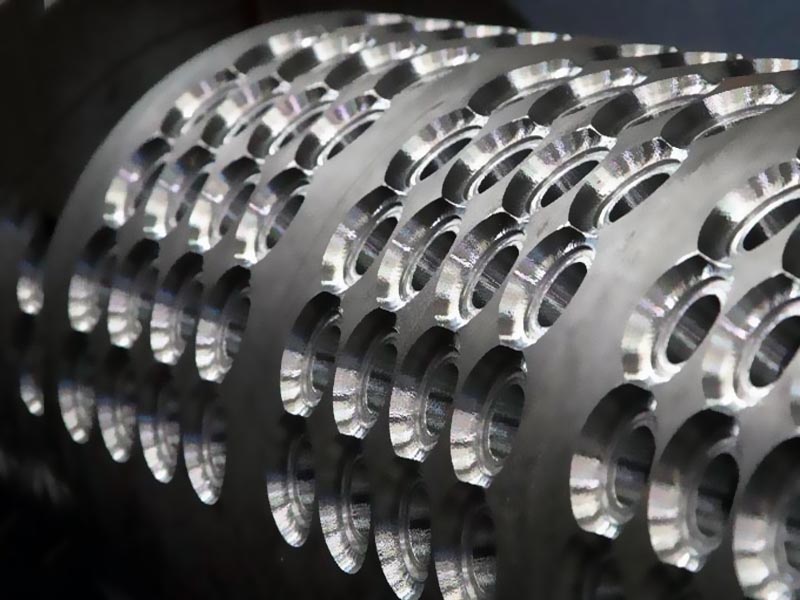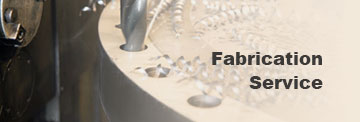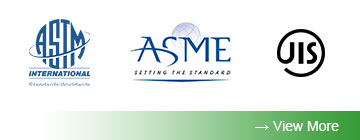
Boiler and Pressure Vessel Steel Characteristics
First, compared with the ordinary pressure vessel, pressure components of boiler has further the working conditions and requirements, boiler pressure steel often has a large number of pipe holes and connected with the complex pipeline system, in addition to under pressure to withstand high temperature flue gas radiation and erosion, high wall temperature, stress state is complex, poor working conditions, so the boiler is generally known as a fire pressure vessel. For boiler pressure components, one failure during working will cause extremely serious consequences, so for the manufacture of boiler pressure components of the material must have a high enough strength, plasticity, toughness and anti-fatigue and anti-corrosion ability, for high temperature components must have good high temperature mechanical properties. In addition, for pressure components in the manufacturing process, raw steel materials undergo complex processing deformation and welding, so the steel used in the manufacture of the boiler must also have a good process performance. All materials used to make pressure components must comply with national standards for boiler steels. In the steel layer, non-metallic inclusions, pores, loose and other defects should be as little as possible, the existence of white spots and cracks are not allowed.
Second, the mechanical properties of Boiler pressure steel, including strength characteristics, plasticity, toughness characteristics and fatigue characteristics. Temperature has a great influence on the mechanical properties of the steel.
-
Strength characteristics:
In China pressure steel strength calculation criteria mainly based on the material at room temperature (20 ℃), while the tensile strength σb and calculated in the wall temperature yield strength σst to determine the material, basic allowable stress for the high temperature element allowable stress depends on lasting strength of steel. Endurance is the maximum stress that does not cause creep damage after a specified working period (usually 105 hours) at a certain temperature. "High temperature" refers to the material at this temperature u will continue to occur slowly plastic deformation, this phenomenon is called creep. Boiler low carbon steel, low carbon manganese steel and low carbon vanadium steel will occur more obvious creep phenomenon when temperature is above 350 ℃, and other heat steel creep temperature above 400 ℃. Figure 1 is a typical creep curve. It can be seen from the figure that the creep process consists of three stages, an initial stage, a stable creep stage and an accelerated creep stage, where the acceleration phase takes a short time but the amount of deformation is very large. Fast breakage. Therefore, for high temperature components should be creep deformation on a regular basis to determine whether they are close to the fracture and must be replaced. Another phenomenon similar to creep is stress relaxation, which means that the element is self-decreasing over time while the element is at constant temperature and maintaining the total amount of deformation (such as a bolt fastener). The reason for the decrease in stress is that part of the elastic deformation is continuously transformed into plastic deformation. -
Plastic Properties:
The plasticity of the steel is generally expressed by the elongation δ5 and the cross-sectional shrinkage ψ. The plasticity of the material affects not only its process performance but also the strength of the component. Good plastic material is not only easy to process, in the manufacturing process is not easy to produce micro-cracks, but also for stress concentration and thermal stress sensitivity is also low, in the process of running the boiler is not prone to brittle damage. In addition, the plasticity can also indicate the quality of the material, for example, when the material is defective (non-metallic inclusions, segregation, porosity, etc.), δ5 and ψ values will be reduced. Boiler steel standards for the minimum plasticity values are made clear requirements, the manufacture of pressure components of the plate elongation δ5 shall not be less than 18%. These standards must be strictly observed, it is to ensure the strength of the boiler pressure component of an important basis.
-
Toughness Characteristics:
Toughness refers to the ability of a material to absorb plastic deformation energy before fracture damage. Impact toughness is the application of a more toughness indicators. Toughness of the material is not easy to brittle damage, in fact, many accidents are caused by brittle damage, so the toughness of the material should be highly valued. Boiler low carbon steel and low carbon manganese steel at room temperature Charpy impact energy of not less than 27J, and requires the impact of the impact rate after the rate of decline is not greater than 50%. The common brittle forms of steel are listed as follow:
- Cold brittle: at low temperatures show brittleness called cold brittle. Although the normal operating temperature of the boiler pressure components are higher, but in the water pressure experiment and start it is possible to occur such brittle damage. The brittle failure is always related to the defects and stress concentration in the material, and the tough-brittle transition temperature is usually determined by impact experiments and drop hammer experiments. In the vicinity of the ductile-brittle transition temperature, the impact value of the specimen decreases rapidly with the decrease of temperature. Due to the large dispersion of the impact test data, the fracture characteristics are usually also referred to in determining the tough-brittle transition temperature. The non-plastic temperature (NDT), which is determined by the drop hammer experiment, intuitively reflects the maximum temperature of the brittle failure of the material and the volatility of the data is less than 5 ° C.
- Hot brittle: to keep steel at 400 ~ 500 ℃ for a long time and then cooled to room temperature, the impact value has decreased significantly, this phenomenon is called hot brittleness. The impact of the decline in the general rate of 50% to 60%, or even 80% to 90%. Many materials have a tendency to thermally brittle, the specific reason is not very clear. So the boiler should be especially careful when restarting.
- Hydrogen embrittlement: caused by the hydrogen in the steel material, ductility reduction or cracking phenomenon known as hydrogen embrittlement. Hydrogen embrittlement is mainly due to the diffusion of hydrogen in the interior of the steel, the aggregation and the combined effect of stress. Hydrogen embrittlement temperature range is generally -100 ℃ ~ 150 ℃. Hydrogen in steel mainly comes from smelting, welding and working medium.
- Electrochemical: intergranular corrosion embrittlement occurs when the local high stress region of the caustic brittle metal material is in contact with NaOH solution with a certain concentration. High stress (higher than 250MPa), NaOH concentration and a certain temperature is the main condition of caustic embrittlement.
-
Effect of Temperature on Mechanical Properties of Materials:
As the temperature increases, the yield limit σts (or σ0.2) of the various steels decreases monotonically, but the tensile strength οtb rises to a high peak at a certain temperature and then decreases. This peak temperature is called the blue brittle temperature of the material. In the vicinity of the blue brittle temperature, the strength of the material increases and the plasticity decreases. Low carbon steel blue crisp temperature in the 200 ℃ ~ 250 ℃ or so. Low-alloy steel blue-brittle phenomenon is not mild steel, and blue-brittle temperature is higher. The general trend of the elongation δt and the cross-sectional shrinkage ψt of the steel varies with the temperature rise, but there is a low peak in the blue brittle temperature. Figure 15-2 ~ 15-5 are the mechanical properties of steel with the temperature curve.
We receive enquiries in English, Español (Spanish), Русский язык (Russian), Français (French) and العربية (Arabic). Our professional team will reply to you within one business day. Please feel free to contact us!


